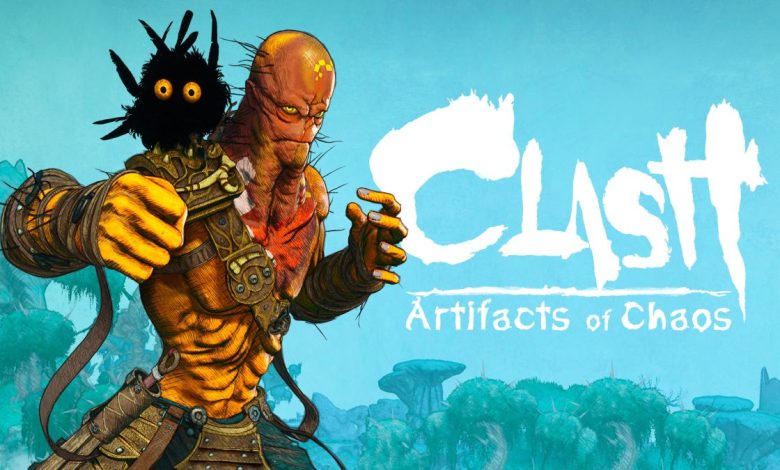
CLASH: ARTIFACTS OF CHAOS
ACE Team's Clash: Artifacts of Chaos is an open-world action game with an emphasis on melee brawling that attempts to combine influences from some of the most successful games in the genre in recent years, from Soulsborne to God of War.
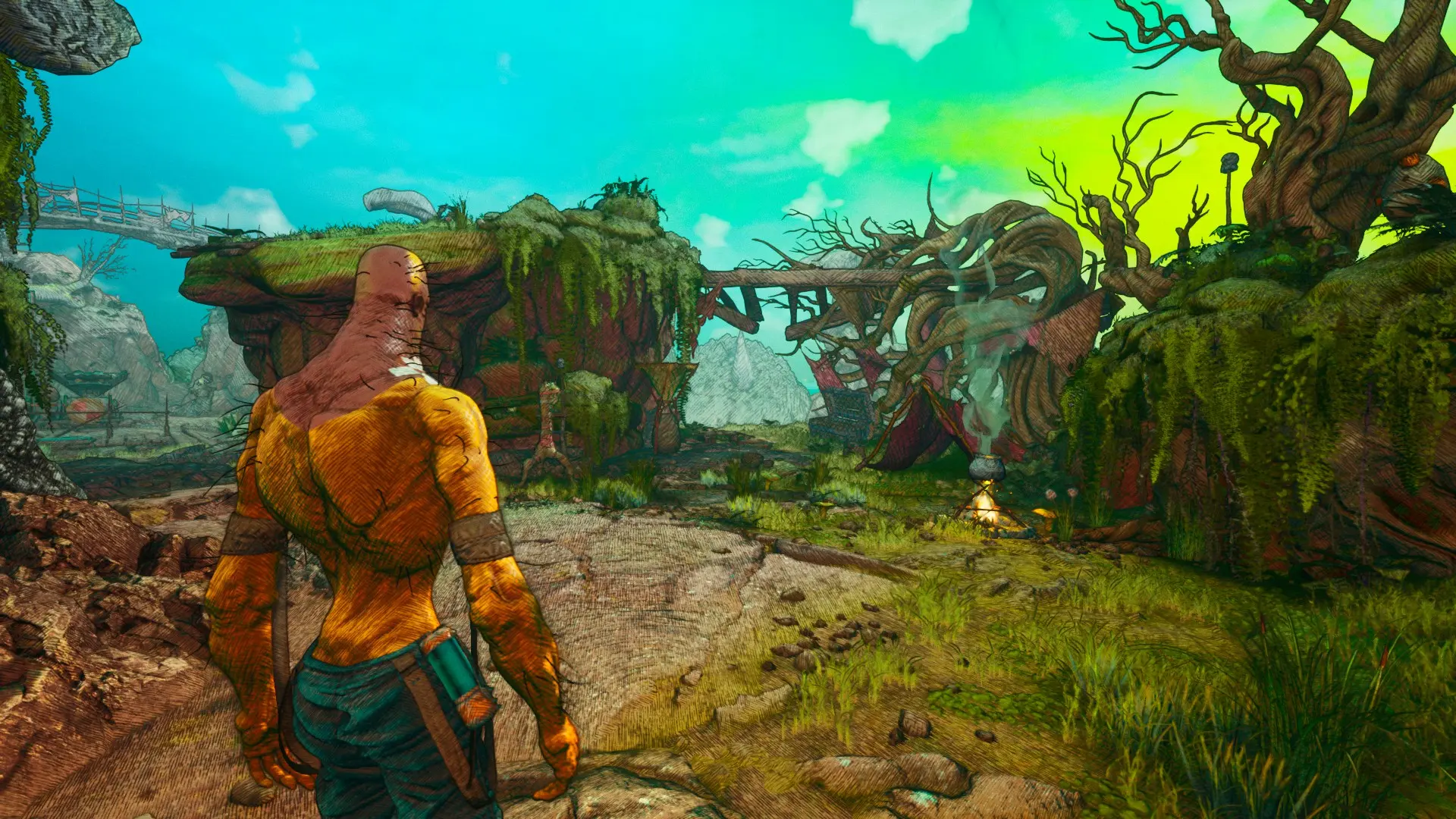
Ace Team is responsible for one of the most cult games series of the last decade, Zeno Clash, which stood out mainly for its unique aesthetics, both in terms of graphics style and wacky character quirkiness. Clash marks a return to the world of Zeno Clash, Zenozoik, with new protagonists and many game design changes. But are all the changes for the better?
But first I'll mention something that hasn't changed, and that's Zenozoik's aesthetic, which the creators refer to as "surreal and punk fantasy", and I for one can't describe it more clearly. Anecdotally, though, I can mention that it's so unique as a style that when I saw screenshots of Clash without knowing anything about it, I immediately thought it must have something to do with Zeno Clash, even though it's been ten years since I've been involved with it. Then I saw that it is indeed from the same developers.
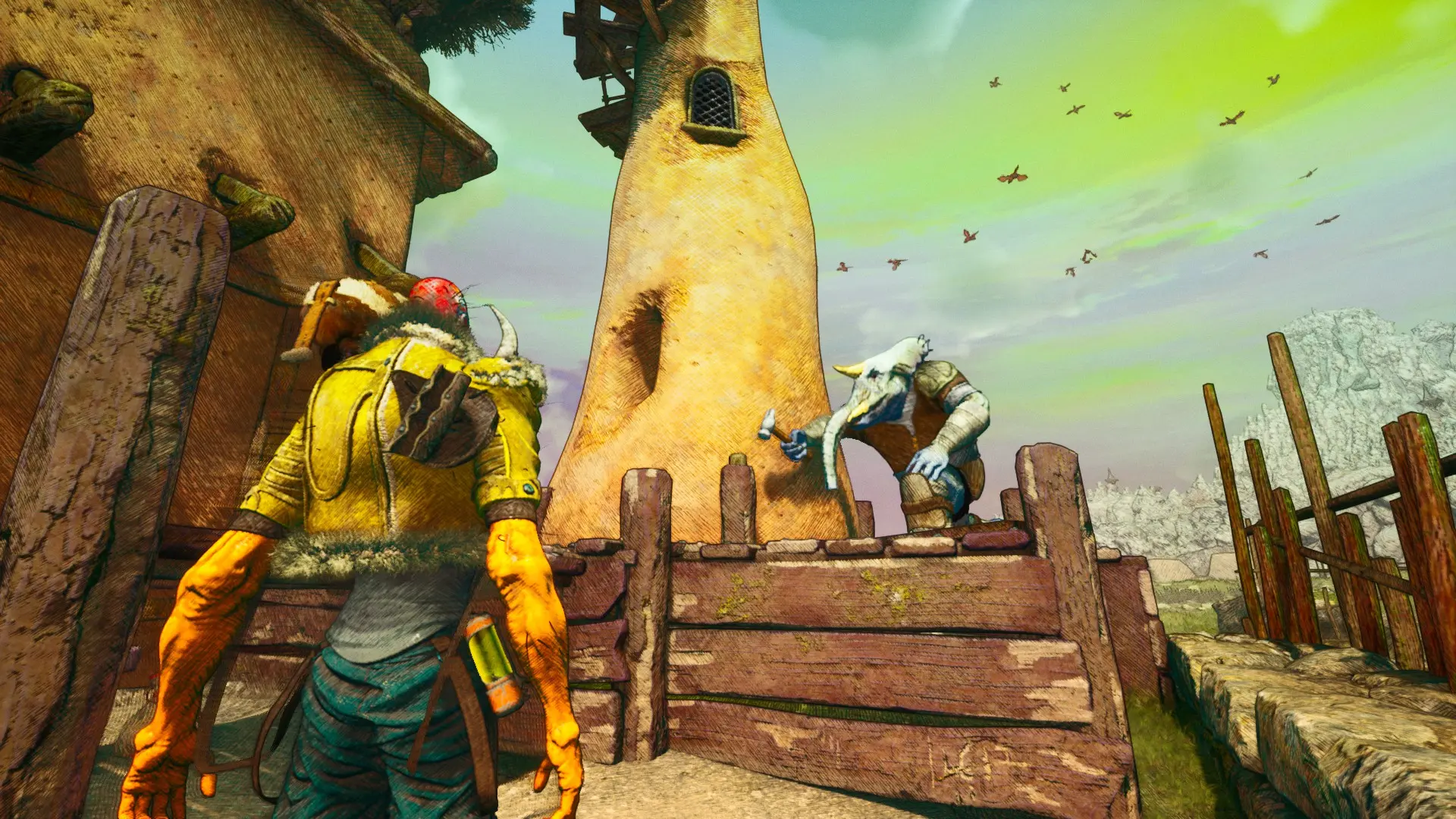
To conclude on the technical aspect, Clash also has a very strong soundtrack (although the really memorable tracks are heard relatively late in the game), while excellent work has been done on the voice acting of the two main characters - the rest of the characters don't stand out, but that doesn't mean they don't do their job well.
The game starts without any explanation, neither about who we are, nor what we should or even want to do. With the first few exploratory walks around the area, we half understand that we are a character with two forms, a normal, fleshy one by day, and one made of a harder material (visually resembling wood) by night. At first this doesn't seem to matter, but later it becomes clear that certain areas are only accessible by our more resilient form. The day/night rotation takes place in camps that we set up in predetermined locations.
We also find out that we master martial arts, although this is not unusual in Zenozoik, a world where the main form of both entertainment and negotiation is the Sacred Punching.
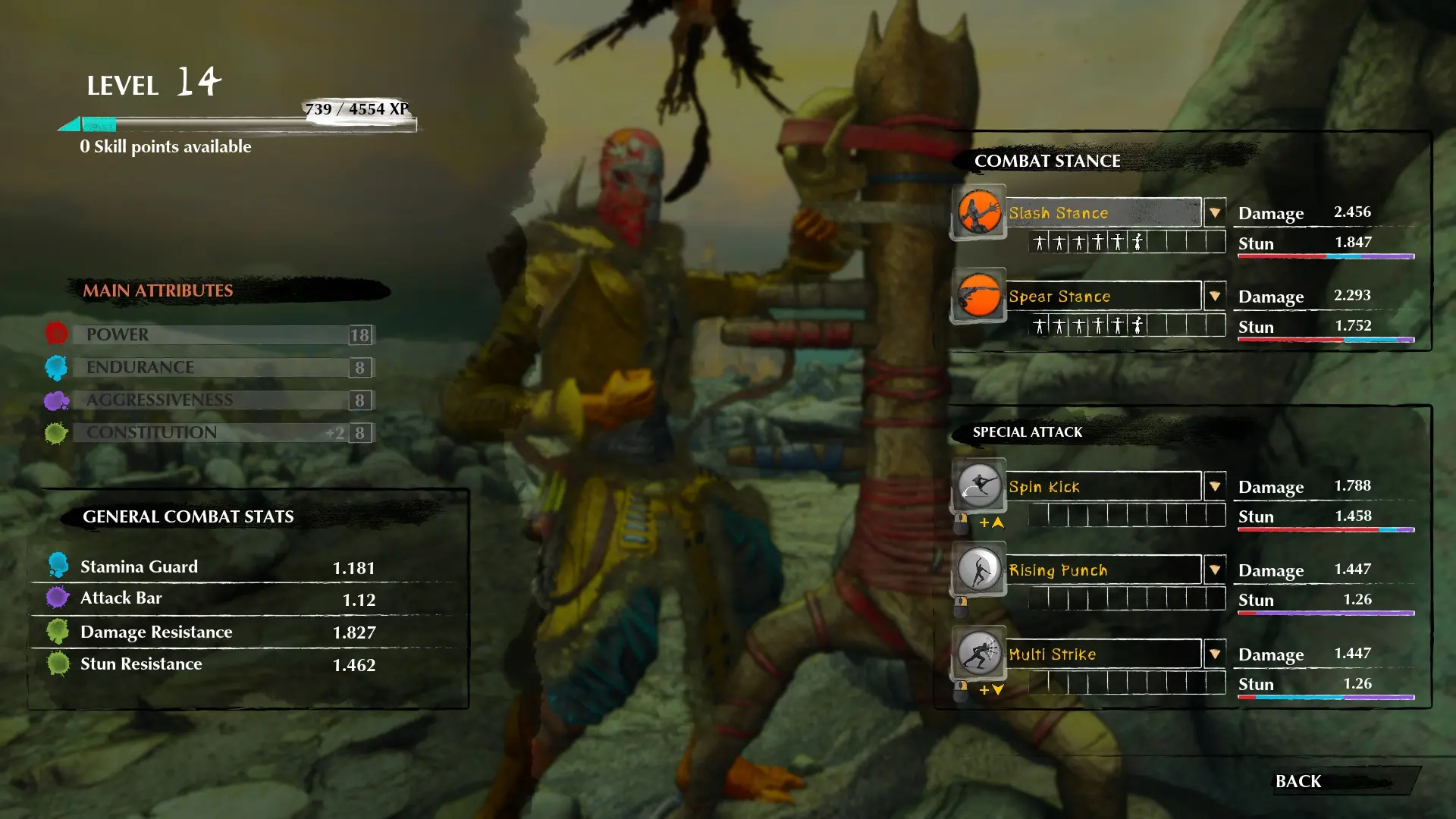
Very soon, in the midst of our initially aimless wanderings, we meet and adopt a small winged creature. Ace Team proudly touts the inspiration they drew from God of War, as our new friend's name is... Boy. Somewhere in there we learn that our protagonist's name is Pseudo. We'll take charge of transporting Boy to safety, which we initially think is a simple task. Something that is soon proven to be a complete lie, as our feathered friend is being hunted by one of Zenozoik's most powerful creatures, the dreaded Gemini, invincible in the Sacred Punching for centuries.
This is where the first big difference becomes apparent compared to Zeno Class, which were completely linear games, in fact they were actually divided into distinct mission-vignettes. This time, Pseudo can freely navigate the world of Zenozoid. Which is open, but not in the way we often associate the term, the one with hundreds of flags on the map with infinitely different activities. There is one main activity, punching and more punching, which we'll talk about in detail later.
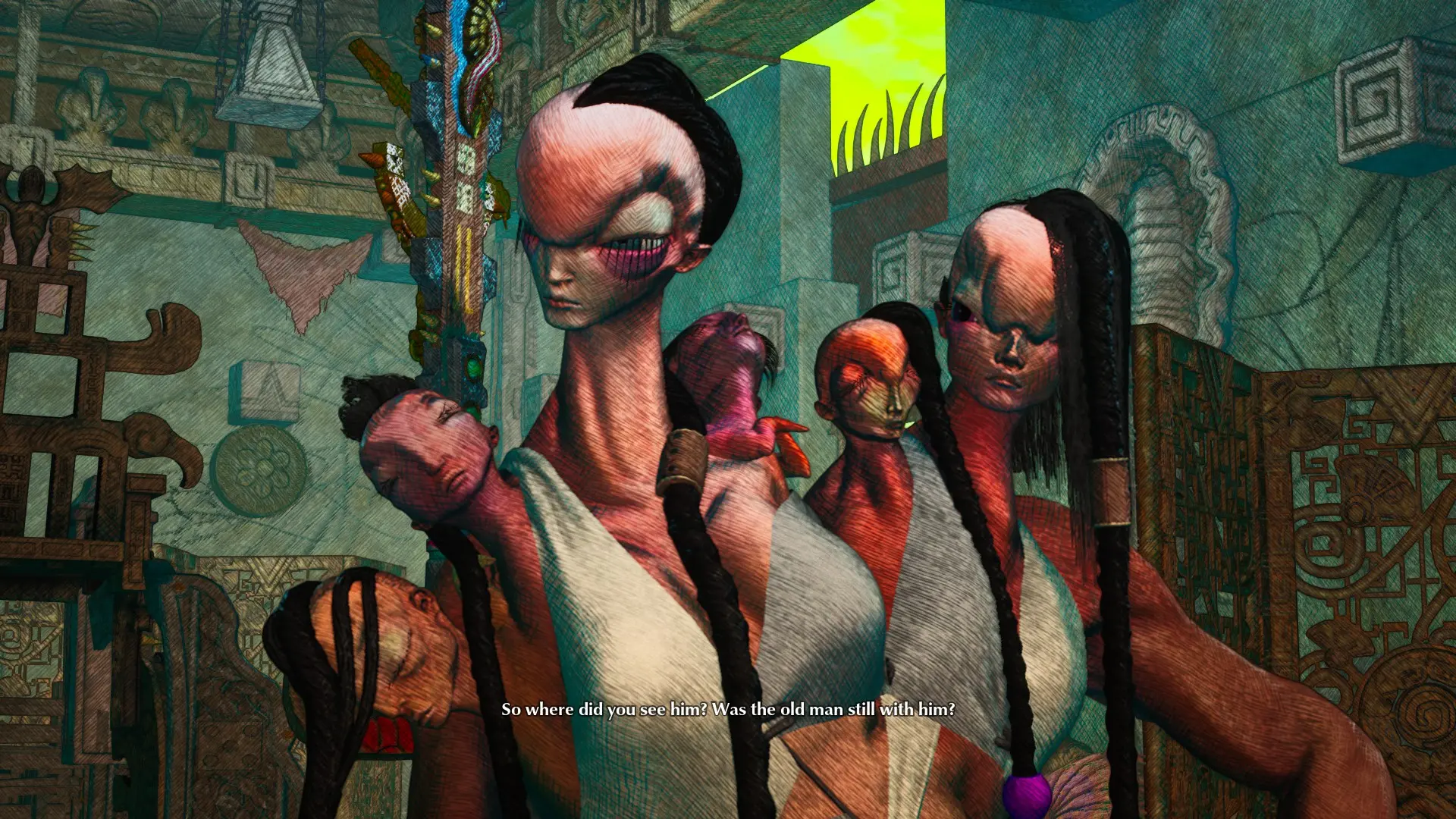
Finally, the map design is more reminiscent of Dark Souls, especially the first one. It requires quite a bit of careful observation to find the right path, and secondly we slowly build/repair the access points between the different areas, an element that many players loved in Dark Souls 1 and that From Software itself struggled to replicate as successfully in subsequent games in its famous series. When the time comes for the interconnections to be fully restored, it becomes apparent that the game's world is ultimately relatively small by the standards of the genre - this isn't a negative criticism, just that it's impressive how much navigational puzzling has been crammed into an area that's ultimately not that huge.
At this point it makes sense that many readers, and especially Soulsborne fans, are ready to buy the game. But I would suggest they at least finish reading the review, because this is where one of the two big problems with Clash comes in.
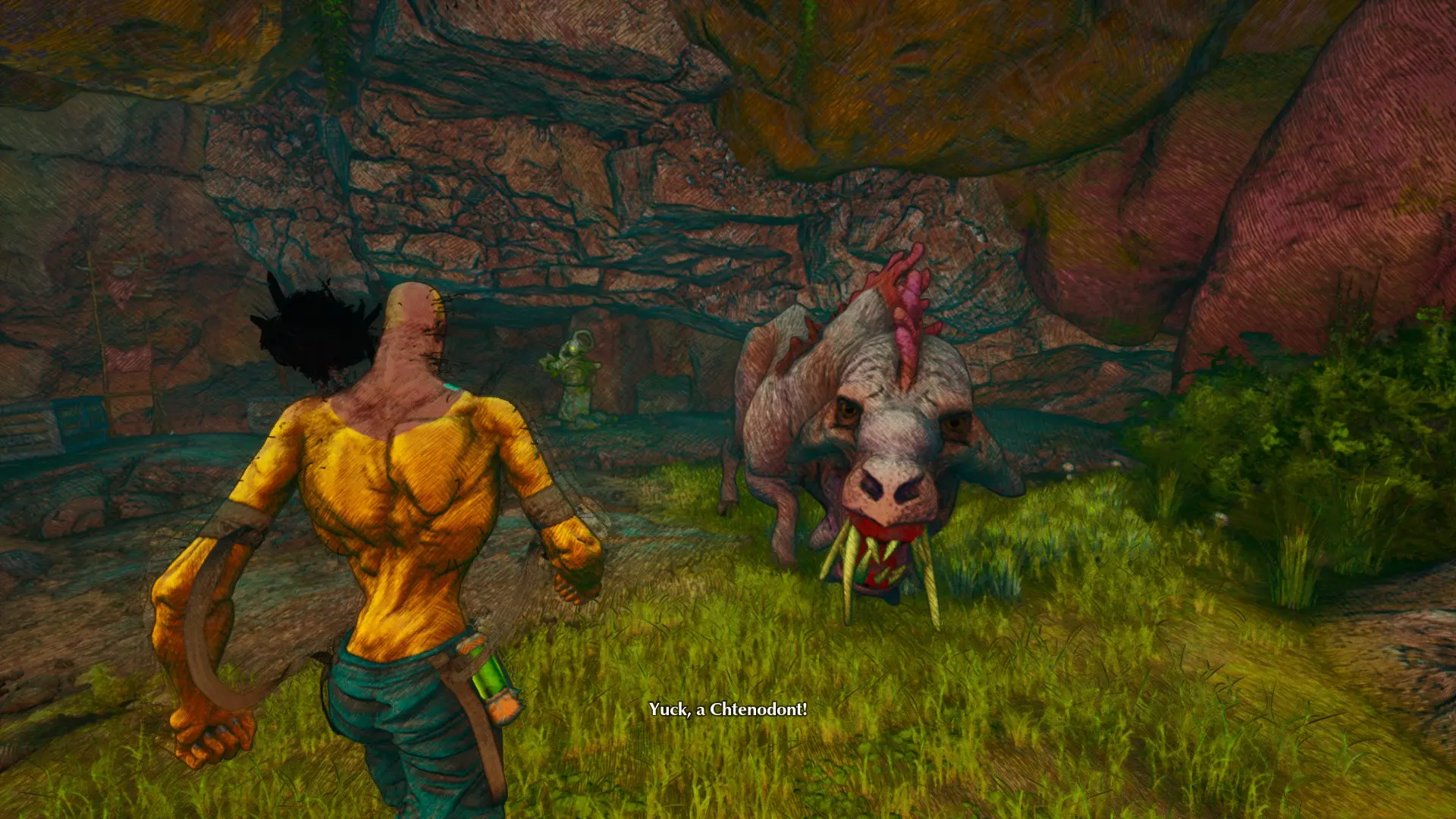
Contrary to the design logic of most modern games, Clash hates handholding. It hates it a lot. And while as hardcore gamers we are certainly very interested in games of this logic, my final opinion is that it overdoes it. Most of the time we're hopelessly lost in the unknown, and at best we have a very general view of where to head. In practice this doesn't often cause a problem because the path choices, especially at the beginning, are limited and there are visual clues to guide us - several of which were added in patches after player grumbling - but when it creates a problem, it creates it for good. On at least two separate occasions, I found myself circling all over the open world for over three hours without being able to find my way - not that I knew where I wanted to go that is, other than looking for an enemy named Director. An experience so but so frustrating that it ultimately left me with a negative opinion of the whole exploration part of the game, and it's literally half the game.
The other half of the game is the battles, and I wish I could say there are no problems. But let's take things from the beginning.
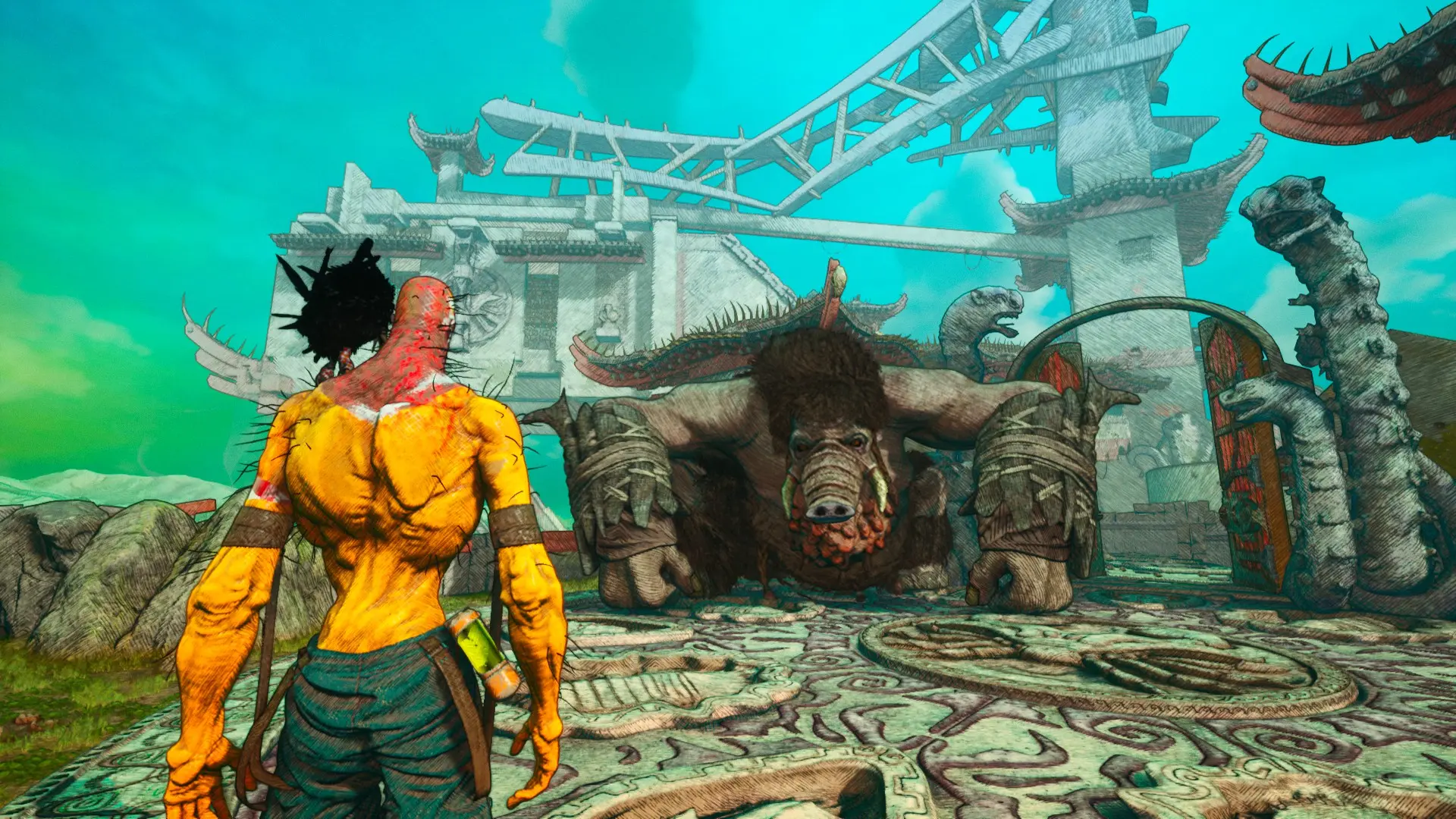
Firstly, battles are divided into those with the common flora and fauna of Zenozoik, which in classic Soulsborne fashion respawn whenever we rest in camp, and those with the intelligent inhabitants, who, even if you beat them, don't respawn - they're also the most overwhelmingly common. In battles with other sentient beings, the challenge mechanic is introduced, where in obedience to the Original Law, the opponents first play some advantages and disadvantages in... dice.
Zeno Clash were brawlers, commonly known as melee games with a lot of punching, in a first-person perspective. The first change is the perspective, since now the combat is mostly done in third-person camera, as in most spectacle fighters. One of the goals in combat of course is to fill up the action meter, which allows us to get into first-person view where there is the possibility of performing devastating, for the opponents, combos.
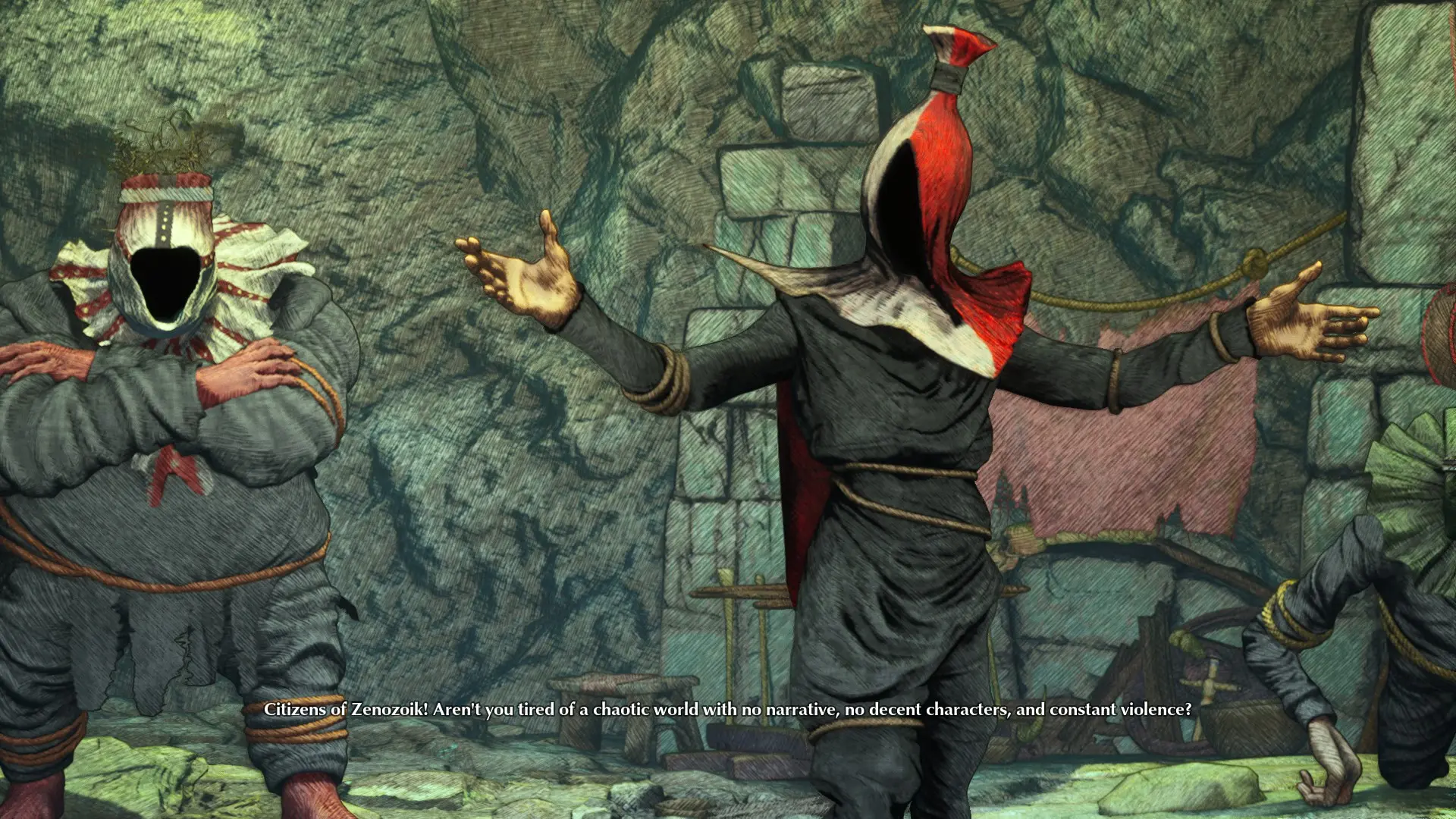
The second change is that the simplicity of Zeno Clash has been replaced with dozens of mechanics and parameters that affect the Pseudo's combat performance and battles in general. A detailed description would double the length of this review. Briefly only, I already mentioned the dice and action meter, and in addition there are character leveling, skills, attributes, artifacts, weapons (which break after some use), stances, special attacks, ways to enhance stances via collectibles, crafting, brewing, trading and loot gathering.
Is it bad for a game to have too many options? Certainly not, and it's not a complicated thing - but in the end it's all about making Pseudo throw and resist more punches, and I am left wondering if it might have been better to have fewer mechanics with more impact each, rather than ten different ones that give 0.05% improvement each.
All of this is almost irrelevant, however, in the face of the big problem which is that the battles, the other half of the game after exploration, aren't as fun as they should be, mainly due to controls - they're floaty for a game like this, you never feel like you're in full control, the character will always do something that you didn't intend to do, especially in terms of dodge or commit to an attack, while the lock system works to its own terms, frustrating given that the majority of battles are against two or even three opponents at the same time.
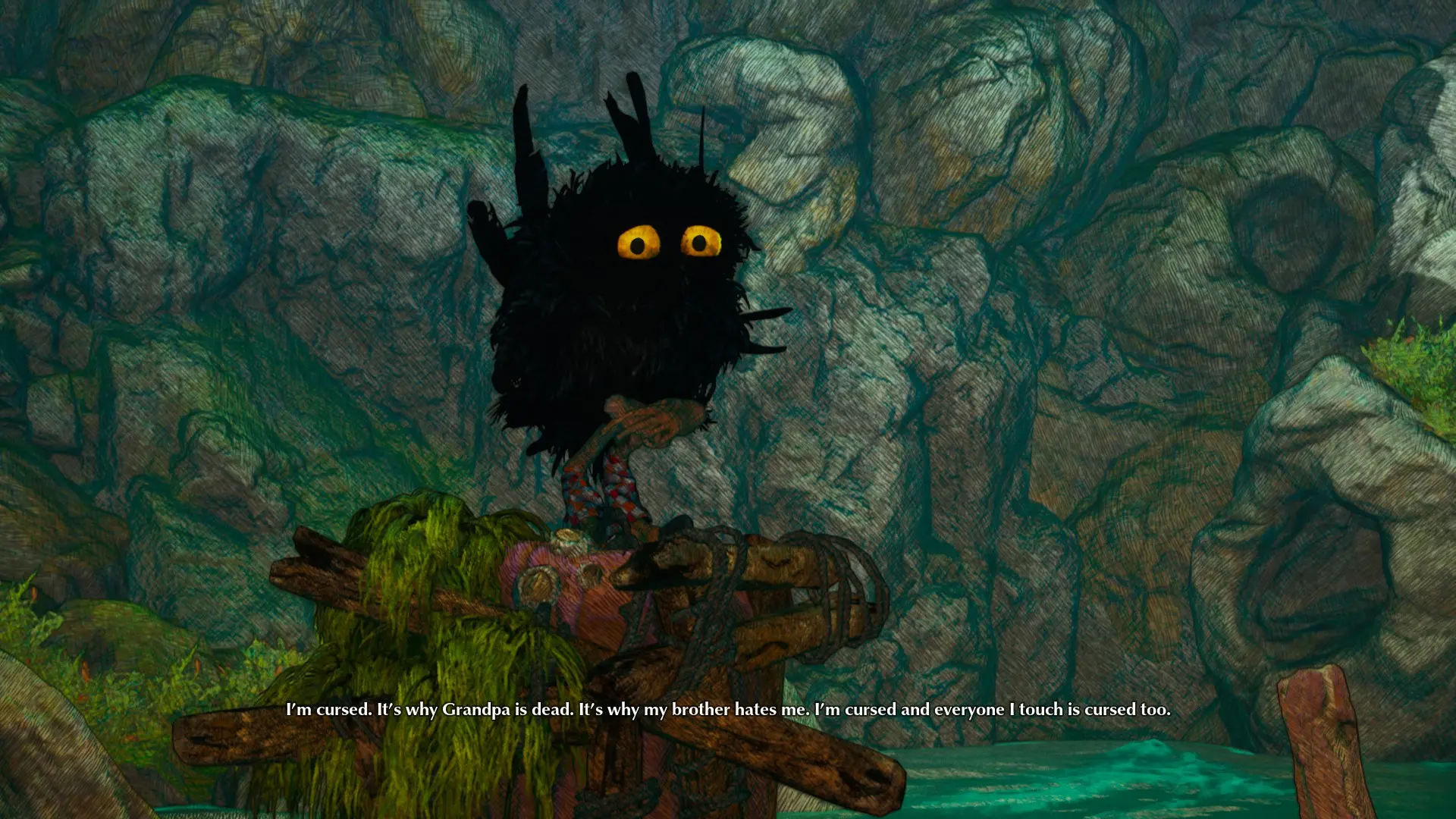
I've read complaints from players that Clash is very difficult, but personally I only encountered real difficulty when I was in an area that I was clearly underleveled for. Otherwise, I only lost when the fuzzy controls made life difficult - and it's a shame, because they are not overly fuzzy, they are just complicated enough so that I can't at least adjust. I have hope that with a little tweaking the situation can be vastly improved, but for now, it is what it is.
In the end, Clash kept me with its surreal world, and not with its gameplay, which at points made me very tired. I think that the clearly talented ACE Team should on the one hand put some water in their wine when it comes to some quality of life features, and on the other hand focus on a slightly leaner, but tighter design in the battle system.
We would like to thank AVE Group for providing the review code.
RATING - 75%
75%
Zenozoink!
The return to Zenozoik will please gamers looking for something different from the ordinary in terms of atmosphere, visuals and overall vibe. The gameplay, however, has issues that, on occasion, can prove to be frustrating.








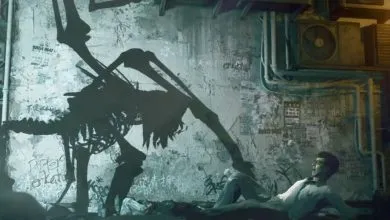
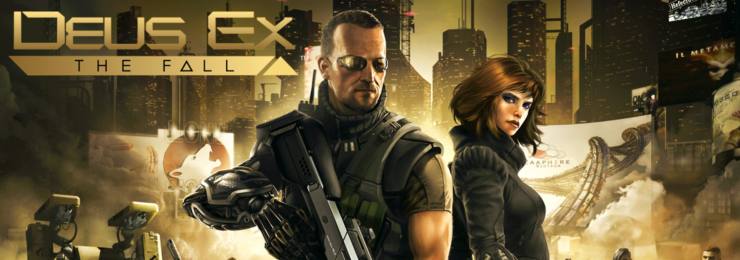
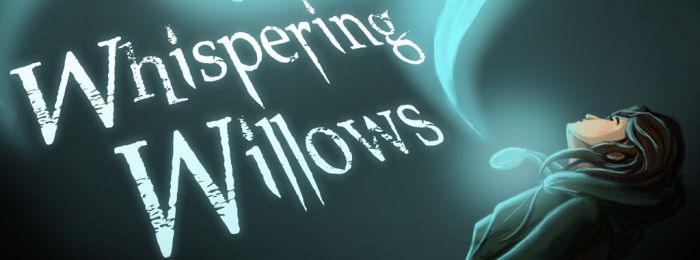



data-trpgettextoriginal=6 comments